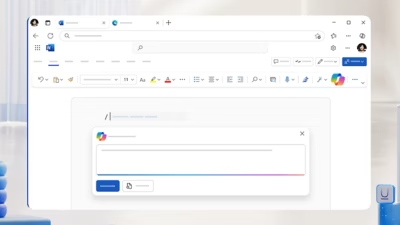Microsoft Publisher is a user-friendly desktop publishing tool that’s perfect for creating flyers, business cards, brochures, and more—without needing advanced graphic design skills. If you’re working on your first marketing piece or want to build a professional-looking business card, Publisher gives you full control over layout, typography, and printing settings.
Here’s how to design and export a flyer or business card step by step.
Step 1: launch Publisher and choose a template
Open Microsoft Publisher. On the start screen, you can:
- Search for a template (e.g. “flyer”, “business card”)
- Choose a pre-designed layout from the gallery
- Or click Blank Page Sizes if you want full creative control
For flyers: search “Flyer” → choose A4 or US Letter
For business cards: search “Business Card” → choose standard 90×50 mm (Europe) or 3.5×2 in (US)
Templates are fully customizable and a great starting point.
Step 2: set page size and layout (optional)
If you’re starting from scratch:
- Go to Page Design → Size
- Select a predefined size or click Create New Page Size
- For double-sided printing, enable Two-page spread
- Use Guides to define margins and alignment lines for precise placement
Step 3: insert and arrange design elements
Use the Insert tab to add:
- Text Boxes – for titles, addresses, offers, or contact info
- Pictures or Logos – from your computer or online
- Shapes and Icons – for decorative or informational graphics
- Backgrounds – choose from gradient fills, textures, or images
You can layer, align, and group elements using the Arrange tab.
Tip: For business cards, keep fonts clear and sizes readable. Avoid clutter—leave room for whitespace.
Step 4: apply consistent styles and branding
Publisher lets you apply Color Schemes and Font Sets from the Page Design tab. This helps you:
- Match your company’s branding
- Keep the design consistent across multiple materials
You can also create your own color palette with specific HEX or RGB values.
Step 5: check print settings and preview
Once your design is ready:
- Go to File → Print
- Choose Single-sided or Double-sided printing
- For business cards: print multiple copies per sheet
- Use Print Preview to check alignment, bleed areas, and spacing
If you’re using professional printing services, make sure to:
- Add bleed margins (usually 3 mm)
- Save as PDF with print quality
- Use CMYK-friendly colors if needed
Step 6: export or print your file
You can:
- Print directly to your printer (great for testing)
- Export as a PDF/XPS for sharing or commercial printing
- File → Export → Create PDF/XPS Document
- Save as image (PNG or JPEG) for online use
Tip: Keep both the editable .pub file and a final PDF version.
Bonus: quick tips for flyers and business cards
For flyers:
- Use a strong, clear headline
- Add contact details and a call to action
- Include visuals (photo of product, QR code, event image)
- Make sure everything is readable from a distance
For business cards:
- Include your name, job title, company name
- Add phone, email, website, LinkedIn or QR code
- Avoid fonts smaller than 8 pt
- Keep it minimal and aligned
Final thoughts
Microsoft Publisher is a fantastic tool for anyone needing professional-looking print materials without the complexity of Illustrator or InDesign. By choosing the right template, aligning elements, and using consistent branding, you can create impactful flyers or business cards in just a few minutes.
Would you like a visual showing layout zones or design ideas for both flyer and business card in one 16:9 image?



